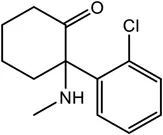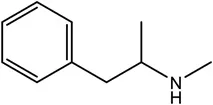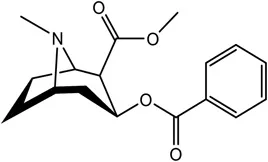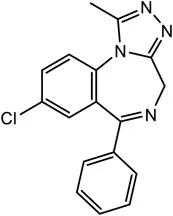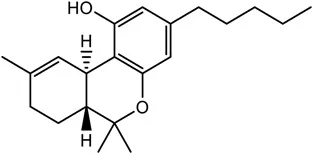![]()
CHAPTER 1
Detection Strategies for Traditional Illicit Substances
X. A. CONLAN*a AND A. G. THEAKSTONEb
a Deakin University, School of Life and Environmental Sciences, Waurn Ponds, Victoria, Australia,
b Department of Pure and Applied Chemistry, Faculty of Science University of Strathclyde, Technology and Innovation Centre, Glasgow, UK
*E-mail:
[email protected] The complex nature of illicit substances makes for one of the most challenging sample matrices for forensic analytical chemists and this is coupled with the need to deal with the overlay of legal and health policies. This chapter looks at the key fundamental concepts that are the foundation for successful detection strategies towards traditional illicit substances. The analyst needs to consider a range of challenges associated with sampling regimens and how industry standards influence these across a range of jurisdictions. Significant technological advancement has occurred in this space in recent years and this chapter highlights the current forensic analyst's toolbox while aligning this with the policy considerations.
1.1 Traditional Illicit Substances
The description of illicit drug use needs to be placed in the context of the time and jurisdiction in which they are defined because many substances that are considered ‘illicit’ in our current time may have been used for legitimate purposes in the past. Further to that, some substances, such as diacetylmorphine (commonly known as heroin) are used legally by the medical profession and simultaneously used illicitly outside of this setting.1,2 The access to diacetylmorphine for Australian medical practitioners is controlled while it is accessible for those in the United Kingdom, meaning that the legislative environment needs to be considered when one defines the impact of an illicit substance. It is also important to note that the trends of illicit drug use within a country change considerably across time and this leads to changes in the response from authorities on the control of illicit substances. If we consider two illicit substances, heroin and methamphetamine, in the Australian context since the mid-1990s, a dramatic change can be observed. Within Australia 14 341 heroin- and opiate-related arrests were documented in 1998 and 1999 3,4 which dropped to 2161 arrests between 2006 and 2007; in the same time period the arrests for methamphetamine use rose from 8000 to 15 000. This prompted the Australian authorities to probe the reasons behind the increasing methamphetamine use and, with the aid of a federal forum, a large-scale funding plan to deal with the issue was developed.
The approach taken by a forensic analyst will be influenced by the legislative environment they find themselves in and factors such as the trigger threshold limit for a drug prosecution may also need to be considered. However, when it comes to the foundational analytical approach analysts worldwide need to be focussed on the figures of merit: sensitivity and selectivity afforded by the instrument in question. It is with this in mind that this chapter will describe the considerations for chemical detection of illicit substances with a focus on recent technological advancements.
1.2 Considerations for Illicit Drug Detection
1.2.1 The Eclectic Array of Drug Samples
One of the great challenges for illicit drug detection is understanding the implications that arise due to the nature of the sample matrix. In order for the analysis results to be used in a court of law the context of the sample collection, and how sampling may have an impact on further steps in the analytical procedure, need to be understood. When a large sample has been seized it may be important to not only determine the type of illicit substance present but also the total mass due to the fact that for some analytes sentencing can vary based on these factors. Substances that are produced illicitly vary in purity and some products contain excipients which lead to a more challenging sample matrix. However, it is worth noting that in most jurisdictions it is the total weight, including the excipients, that is used in the court of law.
Illicit or controlled substances are typically categorised into groups according to their effects on the user, how they are ingested or by their chemical structure backbone. Table 1.1 displays the chemical structures of numerous traditional substances that will be mentioned throughout this chapter and are grouped according to effect (stimulants, depressants, hallucinogens/psychedelics), method of intake (inhalants), and structural identity (narcotics/opioids, benzodiazepines).
Table 1.1Chemical structures of traditional substances that are abused: amphetamine, methamphetamine, 3,4-methylenedioxymethamphetamine (MDMA, ecstasy), cocaine, nicotine, ethanol, ketamine, diazepam, alprazolam, amyl nitrite, heroin, codeine, lysergic acid diethylamide (LSD) and cannabis (tetrahydrocannabinol, Δ9-THC)
| Stimulants | Depressants | Narcotics/opioids |
| Amphetamine | Ethanol | Heroin |
| Ketamine |
| Methamphetamine |
| Codeine |
| Benzodiazepines |
| MDMA | Valium (Diazepam) |
| Hallucinogens/psychedelics |
| Cocaine | LSD |
| Xanax (Alprazolam) |
| Nicotine |
| Cannabis (Δ9-THC) |
| Inhalants |
| Amyl Nitrite |
It is important to note that not every substance mentioned in Table 1.1 and throughout this chapter are deemed ‘illicit’, such as nicotine and ethanol (alcohol), however they are abused in a similar fashion to the controlled substances and therefore are often reported as a drug. Also, substances often have more than one effect on the body, such as cannabis, which can act as a stimulant, depressant and a mild hallucinogen, that further adds to the complex nature and impact of these substances.
1.2.2 Scale of Drug Seizure Samples
When large seizure samples or multiple exhibits are concerned the analyst needs to consider a sampling regime that will allow for an accurate representation of the entire material. The United Nations Office on Drugs and Crime (UNODC) has prepared detailed guidelines on representative drug sampling in collaboration with the Drugs Working Group.5 The group defines some key items for the analysts to follow including:
seizure; the entire amount of the drugs collected
population; the collection of the seized items under examination
package; a container for a single unit or number of units of the seized drug
unit; a single component of the population such as an individual tablet
sample; a unit or number of units selected from the population forming the analytical sample of interest.
The representative sampling process allows for some direction on behalf of the analyst, where units are described as being similar based on external characteristics, such as the size of the crystals or the colour of the powder. Consideration needs to be made around how homogeneous the sample is and for a liquid sample this is less of an issue than for a solid powder where the range of particle size needs to also be established.6 Beyond this general characterisation via an observation process, a randomised sampling approach needs to be developed that allows for the sample to truly reflect the population and that each unit to be sampled from the population has an even probability of being selected. The UNODC team acknowledge that this is quite a difficult process in practice and that analysts typically use a black box approach to randomisation.
It is possible to develop an arbitrary sampling regime however this has the potential to result in a large number of samples from the population being sampled in order to generate a representative sample. To overcome this, a statistical sampling approach should be considered and a large body of work has been done in this area. This can be divided in...




